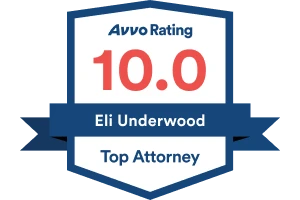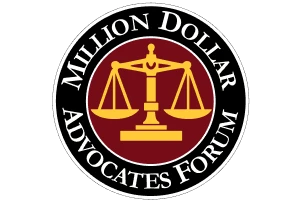
The Corporate Transparency Act of 2020 (the “CTA”) is a Federal law set to go into effect on January 1, 2024. It forces certain members of businesses (those who formed them and those who own large portions of the entity) to report sensitive information to the Federal Government.
Congress’ justification is that more than two million corporations and LLCs are formed in the United States each year. Yet, most or all of the States do not require information about the beneficial owners of the corporations and LLCs.
This allows bad actors to conceal their identities while using their entities to facilitate illegal activity, including money laundering and the financing of terrorism. The CTA seeks to shine a light on these bad actors, thereby protecting interstate commerce and protecting vital national security interests. (P.L. 116-283, Div F, Title LXIV, § 6402, 134 Stat. 4604.)
Why was the Corporate Transparency Act passed?
In 2020, Congress passed the Anti-Money Laundering Act of 2020, and the CTA is merely one portion of the broader AML Law. The AML Law is itself a modification of a pre-existing statute: the Bank Secrecy Act.
As the FDIC phrases it, “The Anti-Money Laundering Act of 2020 modified [the Bank Secrecy Act] and requires financial institutions to have reasonably designed risk-based programs to prevent money laundering and the financing of terrorism. By statutes, individuals, banks, and other financial institutions are subject to the BSA recordkeeping requirements.”
Put another way, the AML Law is a federal statute that seeks to combat money laundering and counter the financing of terrorism. (Sleem v. United States Fed. Gov’t (Dist. N.C. 2023) 2023 U.S. Dist. LEXIS 74562.) The CTA seeks to accomplish this broader goal of the AML through its disclosure requirements, thus increases the overall transparency of business entities.
What entities does the Corporate Transparency Act affect?
The CTA primarily affects Corporations, LLCs and “other similar entities.” (31 USC § 5336 (a)(2)(B).) For the purposes of the CTA, these companies are either “reporting companies” or they are exempt from the CTA requirements.
Under the Code, the term “reporting company” means a corporation, LLC, or other similar entity that is either “created by the filing a document with the secretary of state,” or “formed under the law of a foreign country and registered to do business in the United States.” (31 USC § 5336 (a)(11).)
At first glance, this definition would seem to encompass virtually every corporation and LLC operating in the United States. However, this list of exempt business entities is extensive, including twenty-four (24) different exemptions.
For example, all FDIC-insured banks, both national and state-based, are exempt from the CTA. (see 12 USC § 1813.) Federal and state credit unions are also exempt, as are investment advisors registered with the SEC, insurance producers, public utilities, and public accounting firms, just to name a few.
Even the largest corporations are likely exempt as well. For instance, if an entity employs more than 20 people full-time in the United States, filed federal income tax returns showing more than five million dollars in gross receipts, and has an operating physical office in the United States, then they are exempt from the CTA reporting requirements.
What business entity members need to report under the Corporate Transparency Act?
As stated, the CTA functions by triggering reporting requirements for certain persons involved in eligible business entities. But that doesn’t mean that an ordinary employee needs to comply with this federal statute.
Instead, the CTA reporting requirements apply to “applicants” and “beneficial owners.”
An “applicant” is any individual who files an application to form a corporation, LLC, or other similar entity in the U.S., or someone who registers or files an application to register such an entity in a foreign country that can do business in the U.S. (11 USC § 5336 (a)(2).) In essence, the applicant is the person who formed the company.
A beneficial owner is a more complicated term. Per the code, they are someone who either “exercises substantial control over the entity” or “owns or controls not less than 25% of the ownership interests of the entity.” (11 USC § 5336 (a)(3).) Interestingly, Congress sought to make these definitions as expansive as possible. For the “control” portion of the definition, it includes persons who control “directly or indirectly, through any contract, arrangement, understanding, relationship, or otherwise.”
What information needs to be reported under the Corporate Transparency Act?
If a company comes within the scope of the CTA, then they must submit a report to “FinCEN.” This is the Financial Crimes Enforcement Network of the Department of the Treasury. (11 USC § 5336 (a)(5).) Because the CTA becomes effective on January 1, 2024, qualifying existing companies will need to submit this report within two years. Thereafter, any new qualifying company formed will need to submit the report to FinCEN as part of its formation and registration.
As for what the report must contain, the general requirement is that each and every beneficial owner and applicant must reveal (1) their full legal name, (2) their date of birth, and (3) their residential or business address.
After this report is submitted, FinCEN will provide the relevant individuals with unique FinCEN identification numbers. This will allow the Federal Government to keep track of all persons coming into the scope of the CTA. In fact, the information submitted in the report will be retained by the Federal Government for at least five whole years from the date of the report.
That said, the information is ultimately confidential to most persons. Per the Code, the only time this information will be disclosed is when it’s requested by a Federal national intelligence or security agency, a State law enforcement agency, a financial institution, or a Federal functional regulator. (11 USC § 5336 (b)(C).)
What are the penalties for not following the Corporate Transparency Act?
Under the CTA, it is unlawful for any person coming into the scope of the Act to willfully provide false or fraudulent reporting information. This can result in a fine up to $10,000 and two years of prison time. (11 USC § 5336 (h)(3).)
The penalties go both ways, too. If, for instance, the Federal Government gives an unauthorized disclosure of the CTA report to someone not entitled to receive it, then the officer or agent who violated the CTA can be fined up to $250,000 and imprisoned for five years.
While these penalties may seem steep, there is at least a safe harbor period. Under the Act, if someone submits inaccurate information, but corrects it within 90 days of submitting the initial report, they cannot be penalized.
How the Lawyers at Underwood Law Firm Can Help
Running a business can be difficult, especially on account of various reporting requirements that arise from both Federal and State regulations. With this brand new law around the corner, business owners may be wondering about the next steps they need to take.
As each case is unique, LLC members would be well-served to seek experienced counsel familiar with pass-through entities and co-ownership disputes relating to real estate. At the Underwood Law Firm, our knowledgeable attorneys are here to help. If you would like more information on the CTA or if you need advice about real estate litigation, please do not hesitate to contact our office.










